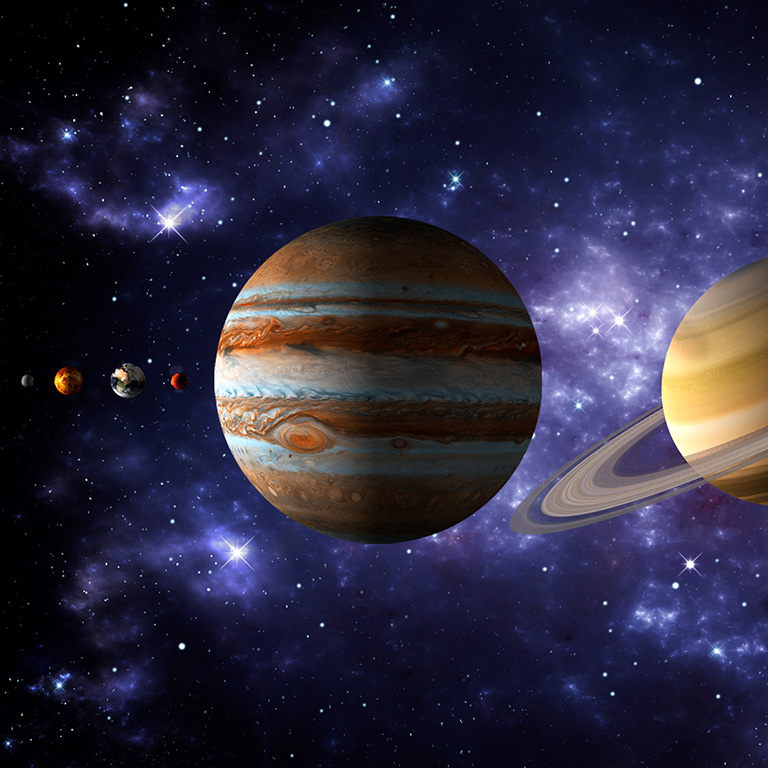BLOOMINGTON, Ind. -- The five planets visible with the naked eye will be on display from east to south along the horizon at dawn on June 4. They will appear in the same sequence in the sky as in their orbits around the sun. From left to right, Mercury, Venus, Mars, Jupiter, and Saturn will form an arc spanning 91 degrees. It's been about 100 years since a similarly compact group of planets marched across our sky, and there won't be such a gathering again until 2041.
On that morning Mercury and Venus will be 18 degrees apart, Venus and Mars will be separated by 30 degrees, Mars will be 4 degrees from Jupiter, and Saturn will be 39 degrees west of Jupiter. To see Mercury only 6 degrees high in brightening twilight, you'll need an unobstructed eastern horizon and binoculars.
The first planet to rise will be Saturn, soon after 1 a.m. local time early in the month and an hour earlier by mid-month. The best time to view Saturn will be the hour before dawn, when it will be more than 30 degrees high in the south. Its rings will be tilted 12 degrees to our line of sight, the narrowest for the year.
Jupiter and Mars will rise together -- less than 2 degrees apart -- in the eastern sky around 2:30 a.m. local time as the month begins. Jupiter will be 16 times brighter than reddish-orange Mars. The distance between the two planets will grow by a half-degree each day. By the time the crescent moon joins them on June 21, Mars will be more than 13 degrees east of Jupiter. At month's end Jupiter will rise shortly before 1 a.m. local time and be 40 degrees high an hour before dawn. Mars will brighten slightly during June, but it will remain challenging to see through a telescope.
Venus will rise before 4 a.m. local time all month. Mercury will join Venus in mid-month. Mercury will be 8 degrees south of the Pleiades star cluster on June 13, and three days later it will form an equilateral triangle with Venus and the Pleiades.
Solstice
The sun will reach the June solstice at 5:14 a.m. EDT on June 21, marking the start of summer in the Northern Hemisphere and winter in the Southern Hemisphere. For the next six months in the Northern Hemisphere the days will be getting shorter. The word "solstice" is derived from two Latin words that mean "the sun stands still." This is because the summer sun climbs to a higher point in the southern sky each day until the solstice. On the day of the solstice it appears to arrive at about the same maximum height above the horizon as the day before, and each day afterward its maximum point is lower as it drops back toward its lowest point at the December solstice. In this sense the sun "stands still" at the peak of its journey across the summer sky before it starts downward again toward the southern horizon.
Moon phases
The moon will be at first quarter on June 7, full on June 14, at last quarter on June 20, and new on June 28.
Author: Hal Kibbey Email: hkibbey [at] gmail.com


 The College of Arts
The College of Arts